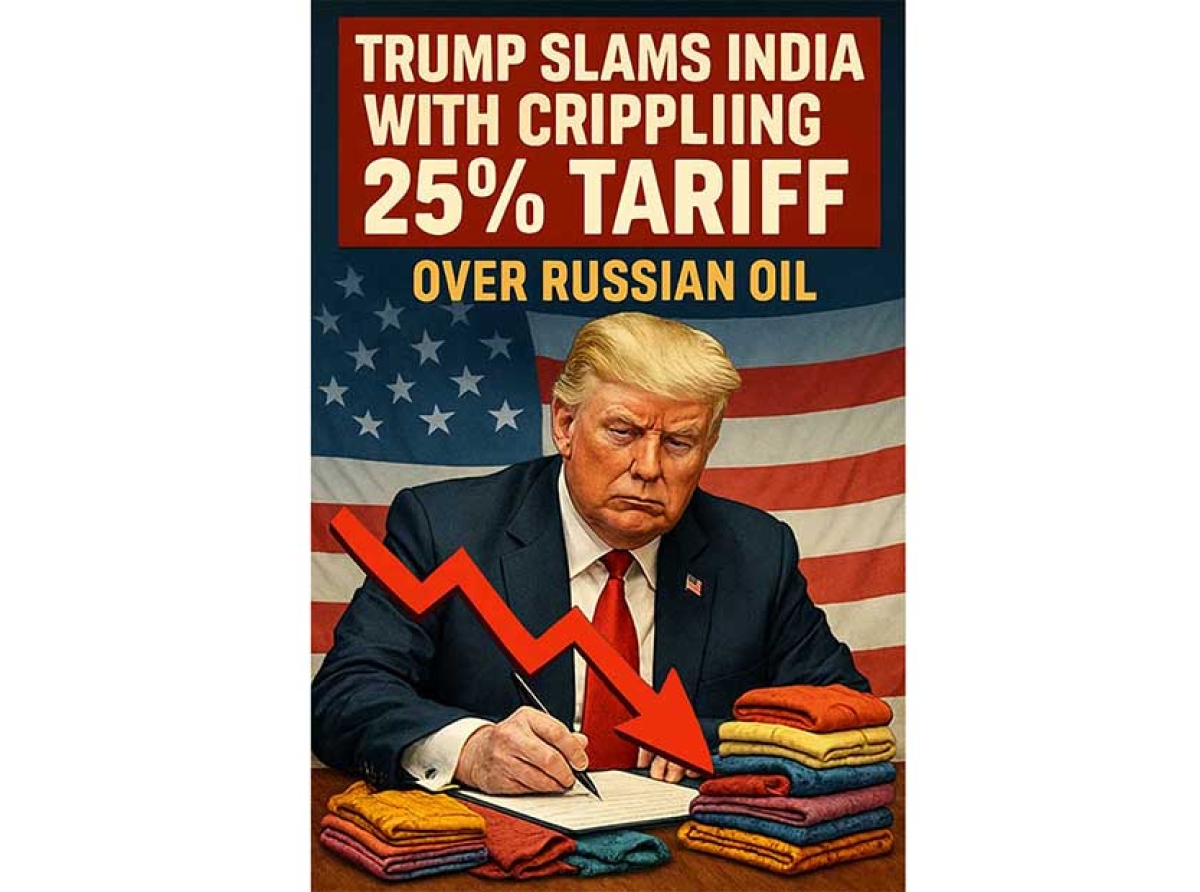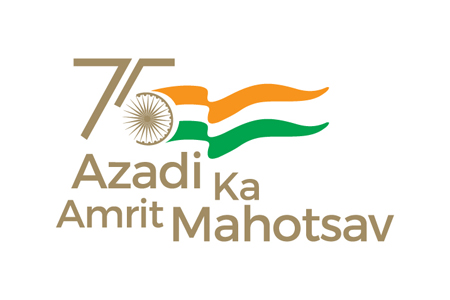Trump slams India with crippling 25% tariff over Russian oil, Indian textile industry braces for devastating fallout

05 August 2025, Mumbai
In a dramatic escalation of global trade tensions, U.S. President Donald J. Trump today signed an Executive Order imposing an additional 25% ad valorem duty on all articles imported from India.
Read our latest issue
The move, effective in 21 days, is a direct response to India's continued importation of Russian Federation oil, which the administration states is undermining U.S. efforts to counter the ongoing "unusual and extraordinary threat" posed by Russia's actions in Ukraine.
The Executive Order, which builds on a previous 25% tariff announced earlier, means that Indian goods will now face an even higher effective import duty. The order explicitly states that the new tariff is "in addition to any other duties, fees, taxes, exemptions, and charges applicable to such imports."
In the order, President Trump writes: "I find that the Government of India is currently directly or indirectly importing Russian Federation oil." He adds that imposing this additional tariff is "necessary and appropriate" to deal with the national emergency stemming from Russia's actions.
The decision comes after repeated warnings from the U.S. administration and has been met with a strong defense from India's Ministry of External Affairs, which has previously called the targeting of India "unjustified and unreasonable."
Effective import duties and penalties
|
Type of Tariff |
Rate |
Application |
|
Existing Tariff |
Varies by product (e.g., 0% to 10.8% for textiles, gems, electronics) |
Standard duty on specific goods from India |
|
Previous Trump Administration Tariff |
25% ad valorem |
Announced earlier, applies to a broad range of Indian goods |
|
New Russian Oil-Related Tariff |
25% ad valorem |
Effective 21 days from today, applies to all articles of India |
Type of Tariff Rate Application Existing Tariff Varies by product (e.g., 0% to 10.8% for textiles, gems, electronics) Standard duty on specific goods from India Previous Trump Administration Tariff 25% ad valorem Announced earlier, applies to a broad range of Indian goods New Russian Oil-Related Tariff 25% ad valorem Effective 21 days from today, applies to all articles of India
The effective import duty on many Indian products is now significantly higher. For example, a garment that previously faced a 10% duty and the earlier 25% tariff will now be subject to an additional 25%, bringing the total duty to over 60%.
The economic impact is projected to be substantial, with one think tank warning of a massive drop in Indian exports to the U.S.
"This move is a clear message to any country that seeks to profit from a relationship with the Russian war machine," said a senior U.S. official who spoke on the condition of anonymity. "The penalty for doing business with Russia is now severe and undeniable."
The Executive Order defines "Russian Federation oil" as crude oil or petroleum products "regardless of the nationality of the entity involved in the production or sale of such crude oil or petroleum products." It also includes "indirectly importing," which the order defines as purchasing Russian oil through intermediaries or third countries where the origin can be "reasonably traced."
The order will become effective on August 27, 2025, with exceptions for goods already in transit and set to arrive before September 17, 2025. The White House has indicated that the order can be modified if India or Russia takes "significant steps to address the national emergency." However, it also warns of further modifications should a foreign country retaliate.
Textiles and apparel industry faces dire consequences
The Indian textiles and apparel industry is expected to be one of the hardest hit sectors by the new tariffs. As a labor-intensive industry, the increased costs and potential loss of orders could lead to widespread unemployment and a severe economic downturn.
Sanjay K. Jain, Chairman of the ICC National Textiles Committee, painted a grim picture of the situation. "With an additional 25% tariff, which makes it 50% plus the earlier 15-16% at 65%... neither can the Indian supplier compensate them, nor can they bear it," he stated. "It’s going to be curtains, all new orders will not come, old orders will all have to be shipped at significant losses."
Jain's analysis highlights the critical nature of the U.S. market for India's textile industry, with a substantial portion of exports going to the U.S. The new tariff, combined with existing duties, makes Indian products uncompetitive compared to those from other nations like Vietnam or Indonesia, which face lower tariffs.
The impact, according to Jain, will not be limited to the factories themselves. It will "trickle down deep down much more than we can see," affecting a vast network of suppliers, including cotton farmers. He suggested that only a bold and immediate move by the Indian government to provide cash incentives could help the industry weather the storm.
Jain also noted the disparity in U.S. trade policy, pointing out that certain industries critical to the U.S. economy, such as pharmaceuticals, have been exempted from the tariffs. He speculated that a retaliatory measure by India, such as imposing an export duty on its own pharma products, could be a potential, albeit risky, move to force a change in the U.S. stance.
Latest Publications

































